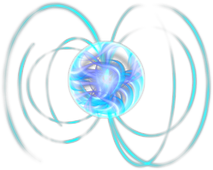Presentation
The Institute of Space Sciences (IEEC-CSIC) is an institution at the forefront of scientific and technological research with the mission of contributing to the general advance of studies of the Cosmos.
During July 1967, Profs. Jocelyn Bell Burnell and Antony Hewish started taking data at the Mullard Radio Astronomy Observatory that would lead a few months later to the discovery of the first pulsar. This year, to commemorate the 50 anniversary of the event, Neutron Stars and their Environments will be the theme of the 1st Institute of Space Sciences Summer School.
Rationale
Ever since their discovery in the late Sixties, neutron stars have been fascinating objects pushing the boundaries of our understanding of the physical Universe. Neutron stars encompass matter at densities beyond those in atomic nuclei and under the most intense magnetic and gravitational fields, representing unique laboratories to test our understanding of the extremes of physics: test general relativity in the strong limit, acceleration of very high energy cosmic rays, or heat transport at nuclear densities. Two Nobel Prizes were awarded on discoveries in neutron star physics so far (Ryle and Hewish 1974; Hulse and Taylor 1993).
In the past decade or so, thanks to the availability of new generation instrumentation, there were high-impact discoveries in the neutron star research: i.e. close-by (few hundreds light-years) thermally emitting magnetic neutron stars (the so-called XDINSs), extremely magnetic neutron stars, known as magnetars, from which crust-quakes during luminous Giant Flares were observed, accreting millisecond pulsars, jets and wind-blown nebulae probing their powerful particle winds, observations of X-ray bursts in systems accreting at the Eddington luminosity, and radio timing of pulsars that allowed to test General Relativity with unprecedented accuracy, as well as constrain the equation of state of dense matter.
The School program covers many aspects of neutron stars, from fundamental physics (equation of state, magneto-thermal evolution) through observations of isolated and accreting pulsars and pulsar wind nebulae across the electromagnetic spectrum, including thermonuclear explosions and generation of gravitational waves in binary systems.
The Institute of Space Sciences will welcome around 30 Master and Doctoral students to attend the Summer School: they will broaden their knowledge on this exciting field as well as get in touch with the other research groups working at the Institute.







